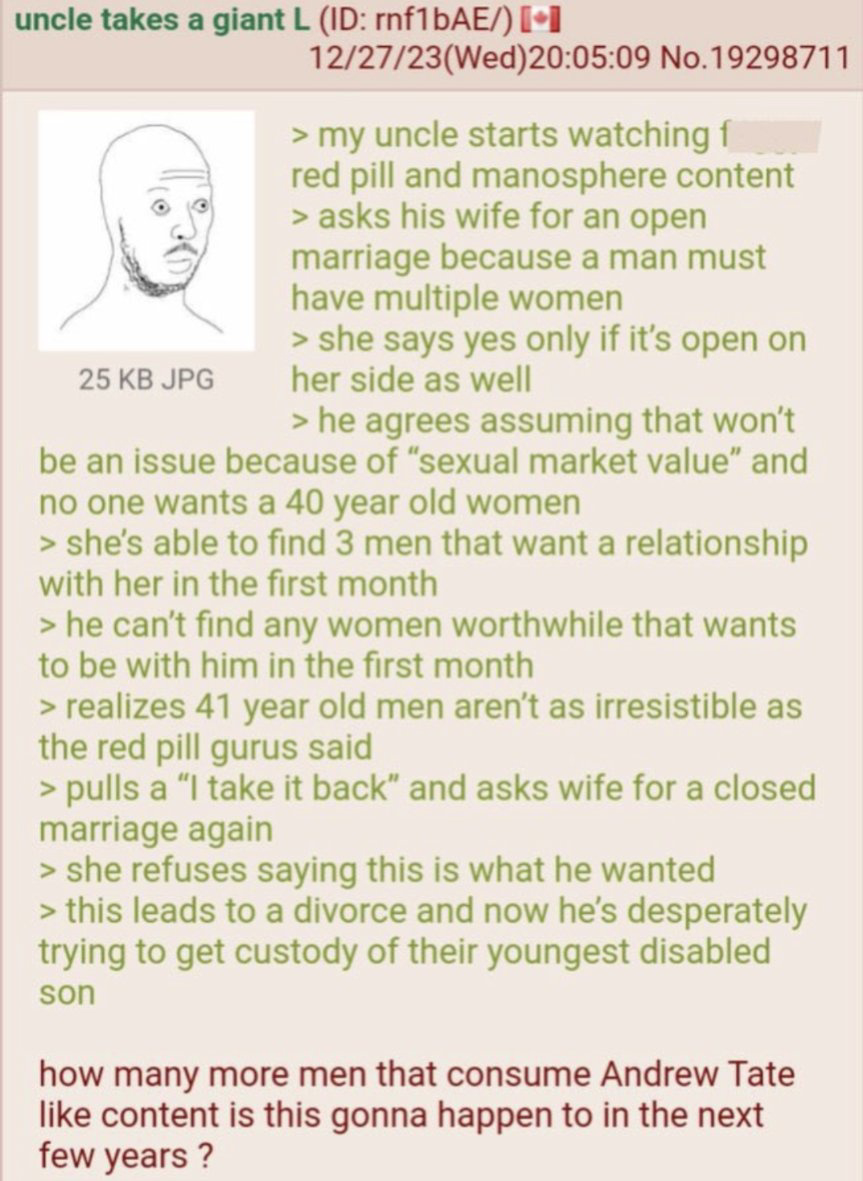this post was submitted on 14 Jan 2024
922 points (97.3% liked)
Greentext
5101 readers
925 users here now
This is a place to share greentexts and witness the confounding life of Anon. If you're new to the Greentext community, think of it as a sort of zoo with Anon as the main attraction.
Be warned:
- Anon is often crazy.
- Anon is often depressed.
- Anon frequently shares thoughts that are immature, offensive, or incomprehensible.
If you find yourself getting angry (or god forbid, agreeing) with something Anon has said, you might be doing it wrong.
founded 1 year ago
MODERATORS
you are viewing a single comment's thread
view the rest of the comments
view the rest of the comments

Due to Fisher's Principle, we know that there's roughly as many women as men. So why don't you go and take a population of 5 men and 5 women, and show how they can be partnered up in such a way that each woman is on average connected to more men than vice versa. You'll quickly find it impossible, and that's because it is mathematically impossible.
Let's go through this step by step. Each woman in your model, has slept with 3 men, men 1-3. This makes the female average 3. Men 1 - 3 have slept with all 5 women each. So 15 sex partners, divided by 5 men, makes 3 sex partners for each man on average. Average for both groups are equal. Care to try again?
This silly train of thought simply ignores that not all men (and women) are of equal value or attraction. In this example, chances are the most attractive man gets more than his statistic average, with the least attractive man getting way less or even nothing.
True, but does not address the thesis being discussed, which is that heterosexual women have more sex than heterosexual men.